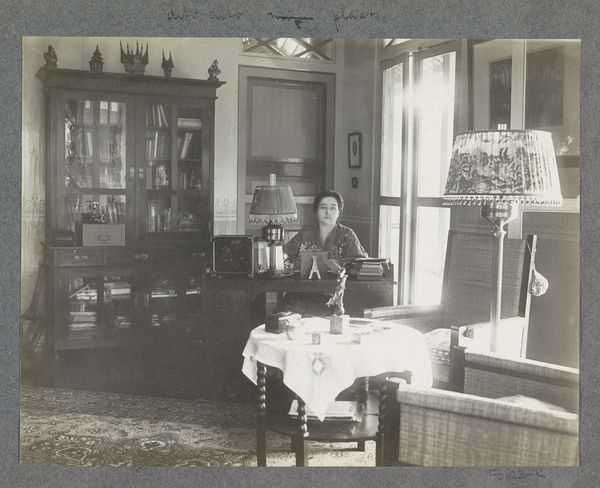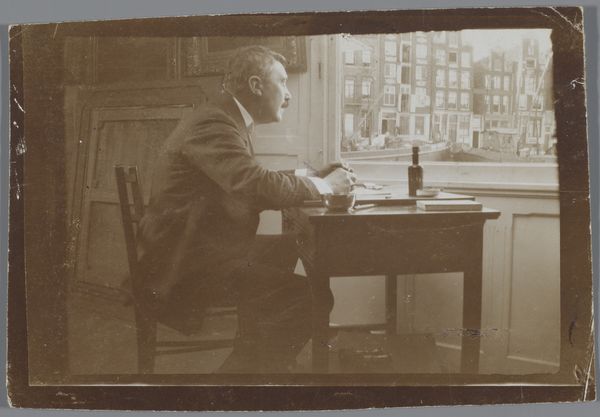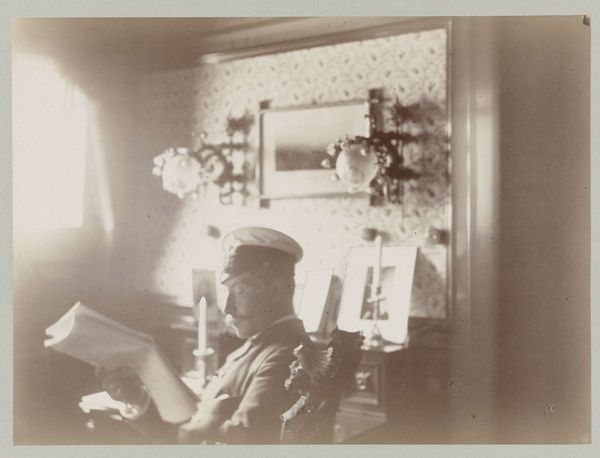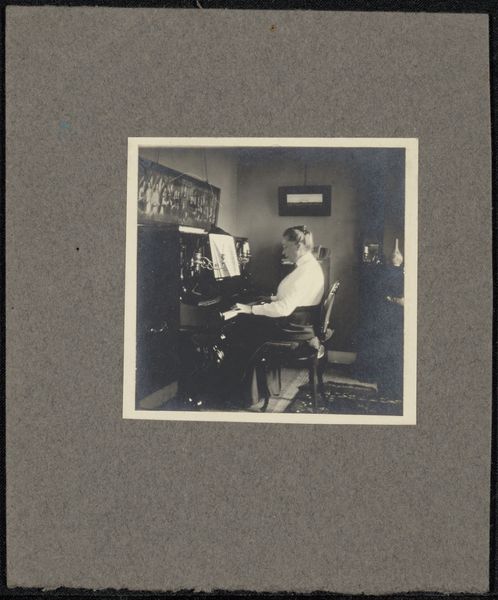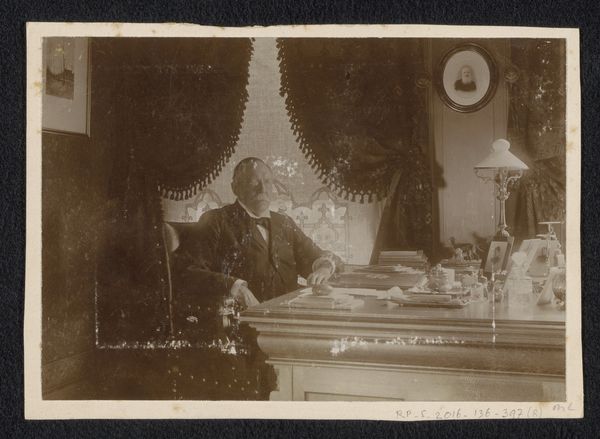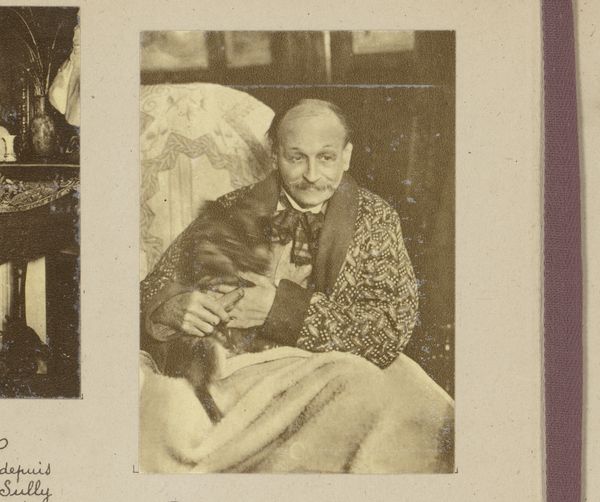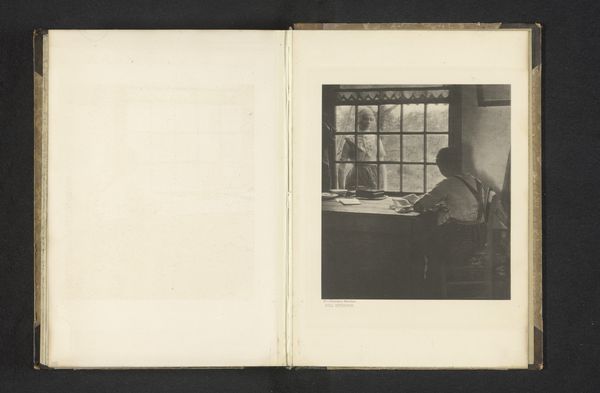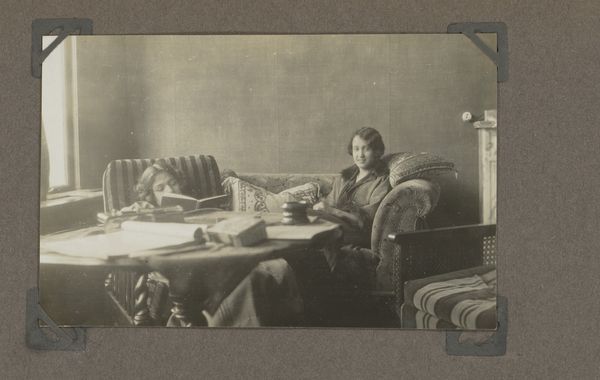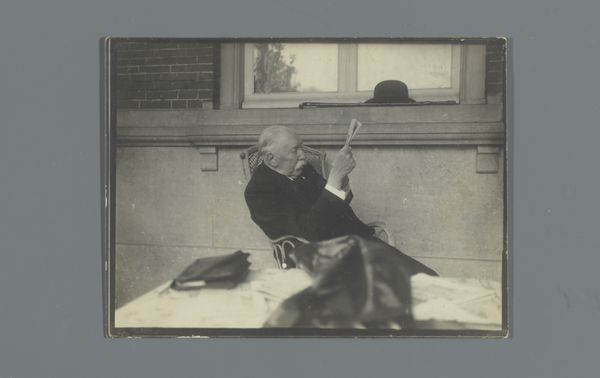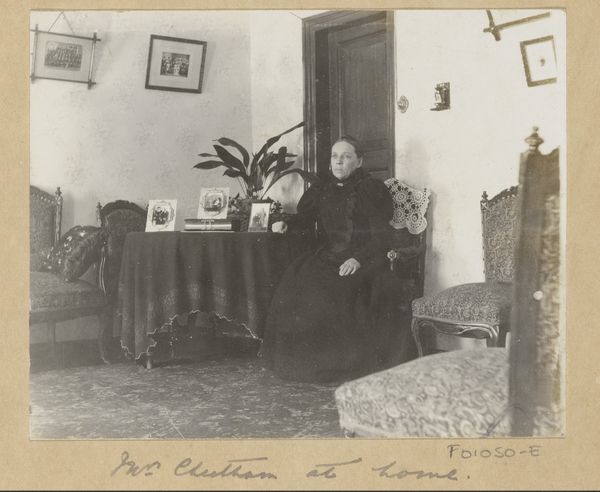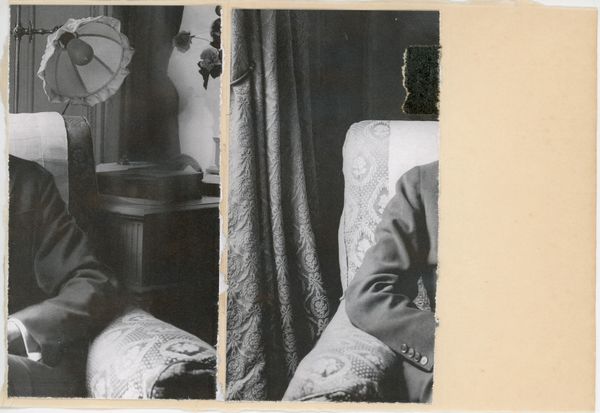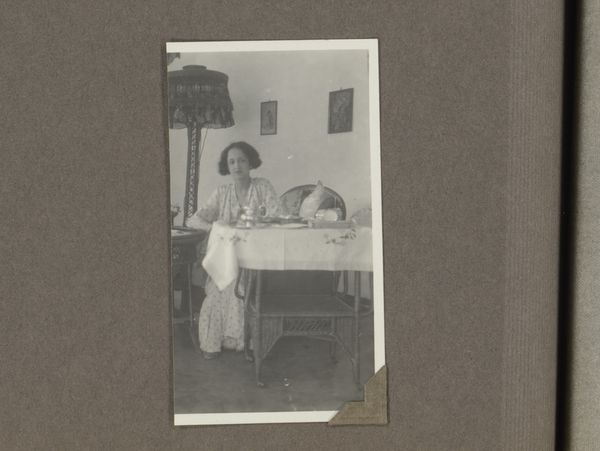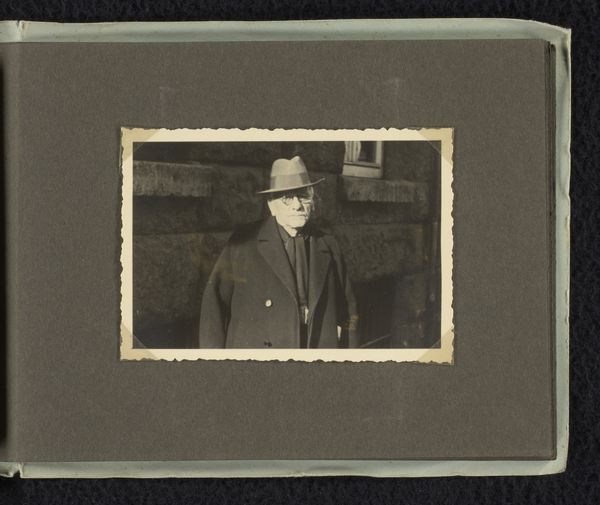
photography, gelatin-silver-print
#
portrait
#
photography
#
gelatin-silver-print
#
modernism
#
realism
Dimensions: height 81 mm, width 57 mm
Copyright: Rijks Museum: Open Domain
Editor: Here we have a gelatin silver print from sometime between 1930 and 1935, titled "Meinard Dorus Mijer aan een tafel" – so, "at a table" – and the artist is anonymous. There’s a studious mood to this portrait. What can you tell me about it? Curator: The beauty of photography lies in its apparent objectivity. But this image, especially considered through a critical lens, prompts questions. What does it mean to present a man, presumably of some stature given the setting, amidst signs of domesticity and perhaps even leisure? Who gets to occupy these spaces, to be depicted in such a manner, and who is excluded? Editor: It’s interesting you focus on space. He does seem very comfortable in the composition. How does that tie into a broader historical context? Curator: Consider the period. This was a time of growing political polarization, with increasing anxieties around class, race, and national identity. Photography, as a relatively new medium, was often employed to solidify these categories – think of mugshots, anthropological documentation. How might this portrait, by focusing on bourgeois respectability, subtly reinforce certain social hierarchies? Editor: So, it’s not just a simple portrait; it is subtly commenting on or upholding a certain order. What do you make of the staging—the screen behind him, for example? Curator: Precisely. And these elements aren’t accidental. The screen, the patterned tablecloth, these objects signify a particular level of privilege and cultural capital. We have to question what work this "realism" is doing. Editor: This makes me think about how portraiture, even in photography, isn't a neutral act. The choices of composition and setting say as much as the subject themselves. Curator: Absolutely. It’s a reminder that every image is a carefully constructed argument, inviting us to question what power dynamics it embodies or obscures. Considering it like this is crucial to a more nuanced understanding.
Comments
No comments
Be the first to comment and join the conversation on the ultimate creative platform.
